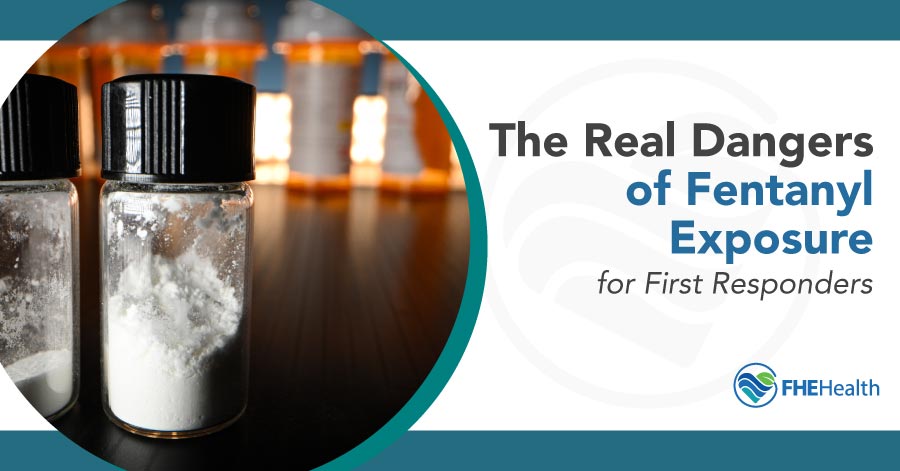
“Broward County is expecting to lose nearly 1,000 people in 2022 to opioid-related overdoses, based on the most current available data. This is a substantial increase from last year. Heroin-related deaths are on the decline, but fentanyl deaths are on the rise. Nationwide we are forecasting about 120,000 overdose deaths, which is roughly equivalent to the population of Daytona Beach.”
That’s David Scharf. He’s talking about the dangers of the synthetic opioid fentanyl:
We look at a monumental amount of the data from a variety of sources. When we do post-fatality reviews, which are essentially social autopsies, we attempt to find commonalities such as previous overdoses, treatment attempts, family involvement, hospitalizations, and other factors which might include criminal justice involvement, previous jail stints, or even prison sentences. When we look at the cause of death, inevitably it involves fentanyl or one of the many synthetic analogs. In most cases, we find multiple illicit and legal substances in decedents such as cocaine, cannabis, and methamphetamine. Alcohol is also rather common, as are some of the drugs categorized as “cathinones” (often referred to on the streets as “bath salts”).
Fentanyl and Its Dangers on the Streets
From these observations, it would seem that even a relatively small amount of fentanyl could be potentially life-threatening. But what about the drug makes exposure to it so dangerous? And what are the real dangers of fentanyl exposure for first responders?
As Director of Community Programs for the Broward Sheriff’s Office and Co-Chair of Broward’s Community Response Team, Scharf has been answering these sorts of questions and educating the public for more than nine years. He has been in the criminal justice field for over 30 years and says that he has never seen anything as devastating as this epidemic.
“Overdose deaths exceed deaths involving motor vehicle accidents or even firearms,” Scharf said. “What we have come to realize is that to defeat this scourge, it must be a community-wide effort.”
Scharf and his Community Response Team include “local, state and Federal Law enforcement, treatment providers, epidemiologists, researchers, peer specialists, licensed practitioners, physicians, nurses, and others,” and they’ve “advocated for legislation, assembled overdose spike response teams, conducted hundreds of community education forums, and educated thousands of middle school and high school students and their parents.”
The Real Risks of Exposure to Fentanyl on the Street?
When we first reached out to Scharf, the issue of fentanyl and its risks had been circulating in various news reports. Even among some law enforcement agencies, there seemed to be some controversy about just how much of a safety threat the synthetic opioid posed and about what careful but reasonable precautions should entail in response to it. What, we wondered, were the indisputable facts about fentanyl’s dangers, the real risks of exposure to the drug?
Scharf explained that the real danger of fentanyl is that “you just don’t know” how potent or deadly an unknown powder, substance or pill cut with fentanyl might be. Why? “Because of the many analogs and different strains.” The scary thing, according to Scharf: There are hundreds of fentanyl analogs on the streets, which means “we don’t know the specific potency, as there is no quality assurance among illicit drug manufacturers internationally. The lethality of each substance, counterfeit pill, or any street drug is unknown, making the matter even more dangerous.
And? “Based on the integrity of the manufacturer, you can make it as powerful as you want. With all these different analogs, you just never know what’s going to be a killer and the most potent and deadly.”
If you think you’re safe buying cocaine or marijuana on the street, a conversation with Scharf may cause you to at least think twice. Today fentanyl and its different analogs and unknown strains are “cutting into heroin, cocaine, amphetamine, and even the marijuana supply.” In fact, “very rarely is pure cocaine on the street.” That’s because fentanyl is much cheaper to make than cocaine—so “if your cocaine is cut with fentanyl, there’s more bang for the buck.” As a real-life illustration of the very real dangers of fentanyl-laced cocaine, Scharf mentioned the spring break incident involving a group of West Point cadets who reportedly thought they were getting cocaine but overdosed on fentanyl instead.
The Growing Presence of Xylazine Cut with Fentanyl
Illegal drug manufacturers are also using the veterinary tranquilizer “xylazine” to make drugs like amphetamine and cocaine—and even heroin and fentanyl, Scharf said. That’s because the sedative is cheaper, maximizing profits.
But xylazine also reportedly lengthens the euphoric effects of fast-acting opioids like fentanyl. That may only increase fentanyl’s dangers by making it less respondent to the life-saving effects of the medicine Narcan. By blocking the same opioid receptors in the brain that fentanyl binds to, Narcan has saved many lives from overdose. The medicine’s effects wear off quickly, however—potentially faster than the effects of a more potent and longer-lasting strain of fentanyl.
Here’s how Scharf explained the required protocol when using Narcan in a situation where someone may have overdosed on fentanyl or another opioid: “Narcan … doesn’t last that long, so if you deploy Narcan, they’re not okay. They need to be taken to the ER.” (And, for Good Samaritans worried about being prosecuted, “the law is very specific that if they do call, they’re not in jeopardy of being arrested.”)
“Blasting” and New Strains of Fentanyl Resistant to Narcan?
Why should concerns about new strains of fentanyl resistant to Narcan be taken seriously (and not just by first responders)? Illegal drug manufacturers are producing more potent, Narcan-resistant products every day, according to Scharf, who said users often speak of “blasting” or using enough product to bypass the effects of Narcan. This means people revived by Narcan are at great risk of succumbing to the amount of drug in their system, so getting them medical attention quickly is imperative.
As for strains of fentanyl that may be resistant to Narcan? They already exist, or at least one of them does. “ISO,” as it’s called, is reportedly 20-100 times more potent than fentanyl.
Most Dangerous Form of Fentanyl Contact?
When we asked Scharf about the most dangerous form of fentanyl contact that first responders face and why, he didn’t hesitate to respond. “Powder form is the most dangerous,” he said. That’s because the tiny particles aerosolize quickly and increase the likelihood of airborne exposure.
Fentanyl powder can also be used to create counterfeit drugs via the use of illicit “pill presses.” What’s a pill press? A pill press is a machine that presses powder into a tablet or pill form that looks identical to the legal product. Presses can create pills that appear to be OxyContin, oxycodone, alprazolam, Adderall, and others but the contents are typically fentanyl.
The Problem of Fentanyl Powder and Counterfeit Pills
Just how bad is this problem of counterfeit pills made from fentanyl? “That’s what we’re really scared of right now—these counterfeit drugs,” Scharf said. “If you get a drug through the internet and black web, there’s a good chance that you’re getting fentanyl because it’s much less expensive to make.”
Scharf said nowadays people can make millions of “oxys” (oxycodone pills) laced with fentanyl and sell them on the internet. What’s even scarier? Even pharmacists can’t distinguish the difference between a fentanyl-laced pill and one without it, according to Scharf. His word of caution: “If your pharmacist or healthcare provider doesn’t prescribe you these pills, don’t get them anywhere else.”
Why Fentanyl Powder Is More Dangerous Than Pill or Liquid Forms?
Why is fentanyl powder more dangerous than its pill or liquid form? Because “it can be aerosolized quickly.” By that Scharf means that the fine crystalline particles that make up fentanyl powder are much easier to breathe in, so if there’s an “unknown substance in powder form (that can be aerosolized quickly), if you test it by opening it up and you’re exposing yourself to that … we’ve had several stories where officers have ingested it and gone down.”
How We Got Here – A Brief History Lesson
Scharf talks a bit like a historian. Our conversation about the dangers of fentanyl began with a brief history lesson. He said that before fentanyl heroin “was the problem”—an unfortunate consequence of Broward County’s “crackdown on pill mills and doctors prescribing opioid drugs.”
It didn’t take long to “realize people who were addicted to these drugs now had a limited supply.” Scharf said that problem became “an opportunity for people to push out the opioids and namely heroin, because the [opioid] supply was being cut.”
“Heroin made its way back on the streets, not only in Broward County but across the nation, so we now had a group of people who were substituting heroin for oxys.”
By around 2015 or 2016, Scharf and other law enforcement experts were seeing a “big push of heroin through the Midwest and through the Southwest border down to South Florida.” That’s also when the elephant tranquilizer drug carfentanil first appeared on the scene. “Just a tiny amount can cause devastation, and the analogs out there have unknown toxicity and strength; and that caused an issue off the bat,” Scharf said.
“Then came fentanyl, which started out as synthetic heroin. It was made in labs and didn’t require the structure and expense that growing poppies and producing heroin required.”
Enter China. China had gotten into the market earlier with “cathinones” (bath salts) but then moved into the fentanyl market, Scharf said. (And it appears China won’t be leaving any time soon.)
First Responder Safety Measures and Recommendations
The advent of fentanyl and the greater dangers that it poses has meant that “many people aren’t doing street testing of these drugs.” One silver lining, though, is “there are other testing methodologies that require much less interaction with unknown substances.” A growing number of law enforcement agencies are employing these safer measures, which include the testing device MX908.
Just how accurate is the MX908 device? Scharf said you “can swab the outside of a package and make a determination as to whether it’s fentanyl; and, if the device does identify one or more substances, they will come up in a library.” (The device was originally used by armed forces to test for weapons of mass destruction but now has another important use in the fight to stop mass destruction by fentanyl and other opioids.)
Despite these encouraging innovations, the fact remains that fentanyl is very dangerous. New analogs with varying degrees of toxicity are popping up all the time. Inevitably, this means that even the most well-informed law enforcement expert won’t be able to stay ahead of the next potential threat. The takeaway: It’s always better to err on the side of caution and “handle something as potentially extremely deadly.”
For more information about the dangers of fentanyl and counterfeit pills, this report from the Broward County Sheriff’s Office may be helpful.
If you or a loved one has ingested or inhaled an unknown pill or powder from off the street, go to your nearest ER immediately.






